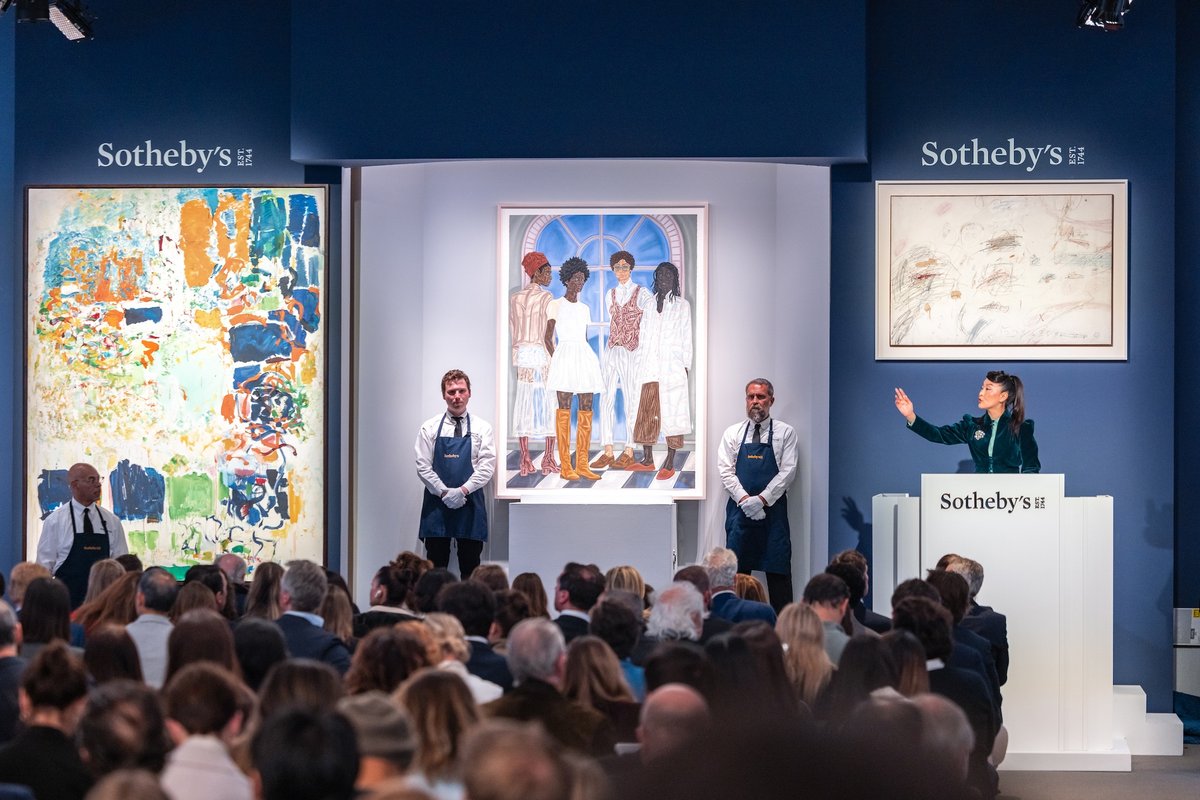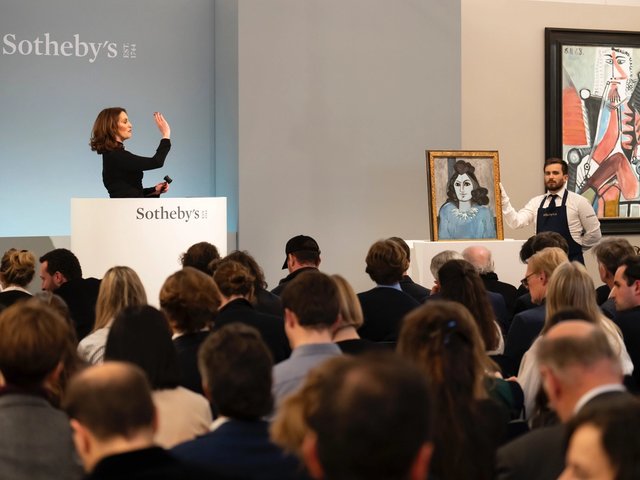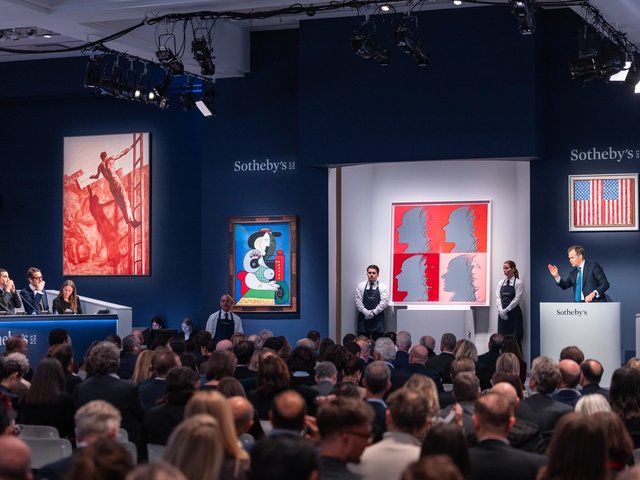New York’s spring auction season is off and running, but its first steps suggest the trade is still fighting through the headwinds that have defined most of the past two years.
Based on hammer prices, Sotheby’s underperformed the presale low estimates for both of its marquee evening sales Monday night (13 May). The house generated $227.9m overall across its The Now and contemporary art evening sales, about 8% beneath the $247.8m lower target amassed before the late withdrawal of Cecily Brown’s Sirens and Shipwrecks and Bathers and the Band (2016), which was expected to bring at least $6m. (Omitting that work would narrow the gap but still leave the hammer total around $14m short.)
That said, this year’s double-header did outperform last year’s equivalent on a raw numbers basis. The May 2023 iterations of the Now and The Contemporary made a combined hammer total of $175.9m ($204.7m with fees), around 25% less by value than Sotheby’s secured tonight.
Taking the pulse of The Now
Taken on its own terms, Sotheby's The Now sale made $26.9m ($32.7m with fees) against a presale estimate range of $30.2m to $42.6m. (Excluding the withdrawn Brown painting would reduce the target to between $24.2m and $36.6m.) The equivalent sale in May 2023 brought $30.1m ($37.2m with fees), meaning this year’s version achieved only around 7.5% less by value.
Five of the 17 lots to actually cross the block carried both a house guarantee and a third-party irrevocable bid; their collective low estimates totaled $11m, more than one-third of the hammer total for The Now. Only one of the remaining lots passed: Jeffrey Gibson’s Always After Now (2014), a figurative sculpture that nonetheless marked the artist’s evening sale debut, according to Sotheby’s. It stalled out at $140,000, just shy of its $150,000 low expectation, despite the artist's recent star turn representing the United States at the Venice Biennale.
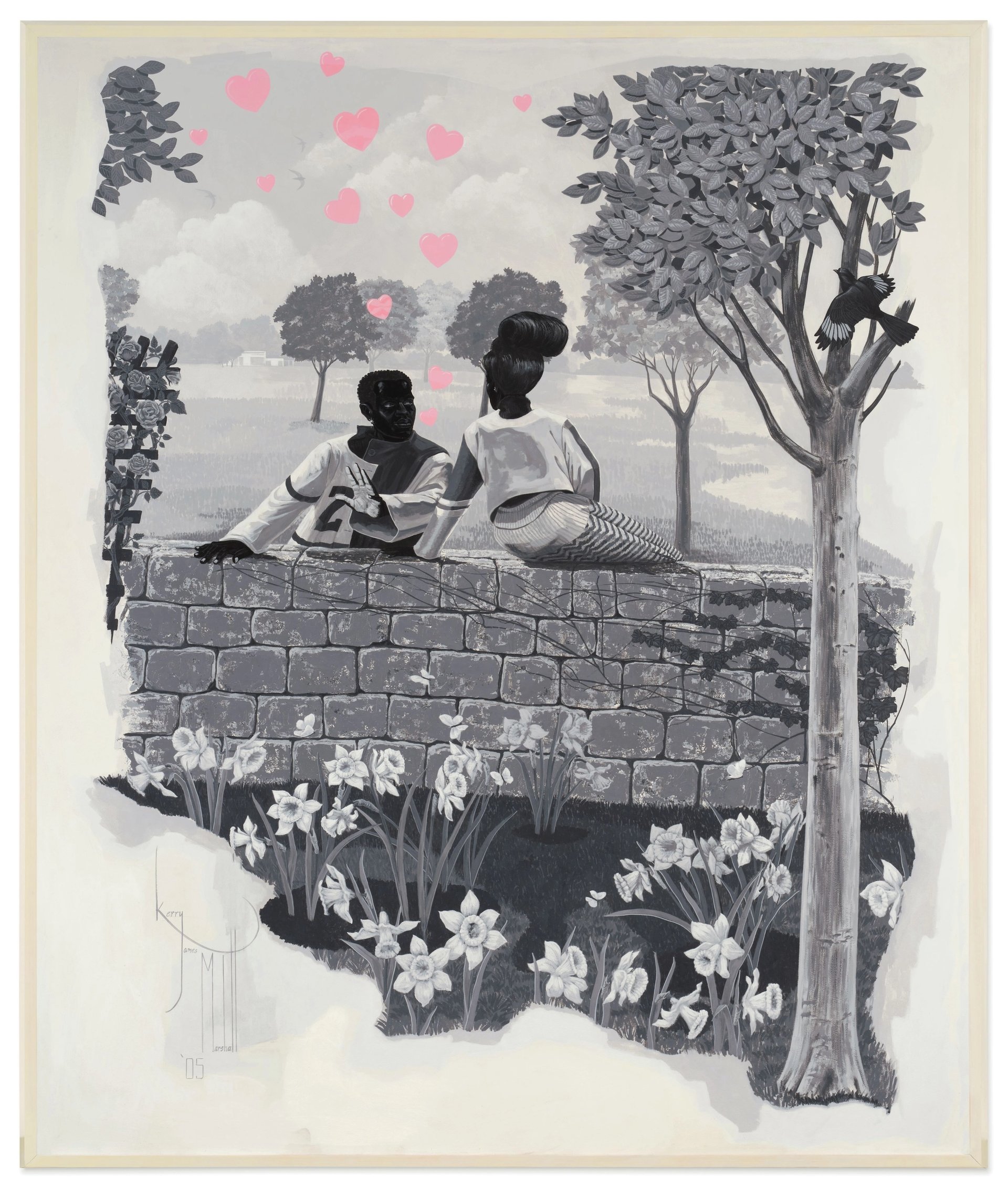
Kerry James Marshall, Vignette #6 (2005)
Courtesy Sotheby's
There were no surprises when it came to the event’s top seller. Vignette #6, a largely grayscale 2005 scene by Kerry James Marshall, hammered at $6.5m ($7.5m with fees) against a $7m to $10m expectation. No other lot saw the gavel fall for more than $2.9m ($3.6m with fees); the work that set that silver-medal mark was Functor Hideaway (2008), the only Brown canvas bidders were able to compete for tonight. The hammer price landed almost exactly in the middle of the painting’s $2.5m to $3.5m estimate range.
Two lots in The Now reset the auction records for their artists. The sale’s opening offering, Justin Caguiat’s The Saint Is Never Busy (2019), exploded off the starting line, with auctioneer Phyllis Kao deftly managing six and a half minutes of bidding from eight competitors before bringing down the gavel at $860,000, nearly triple the work’s $300,000 high target. (The final price after fees was $1.1m.) Eight lots later, 16:10, a fiery 2020 painting by the 34-year-old Los Angeles-based abstractionist Lucy Bull, more than doubled its $700,000 upper target by coaxing a winning bid of $1.45m ($1.8m with fees).
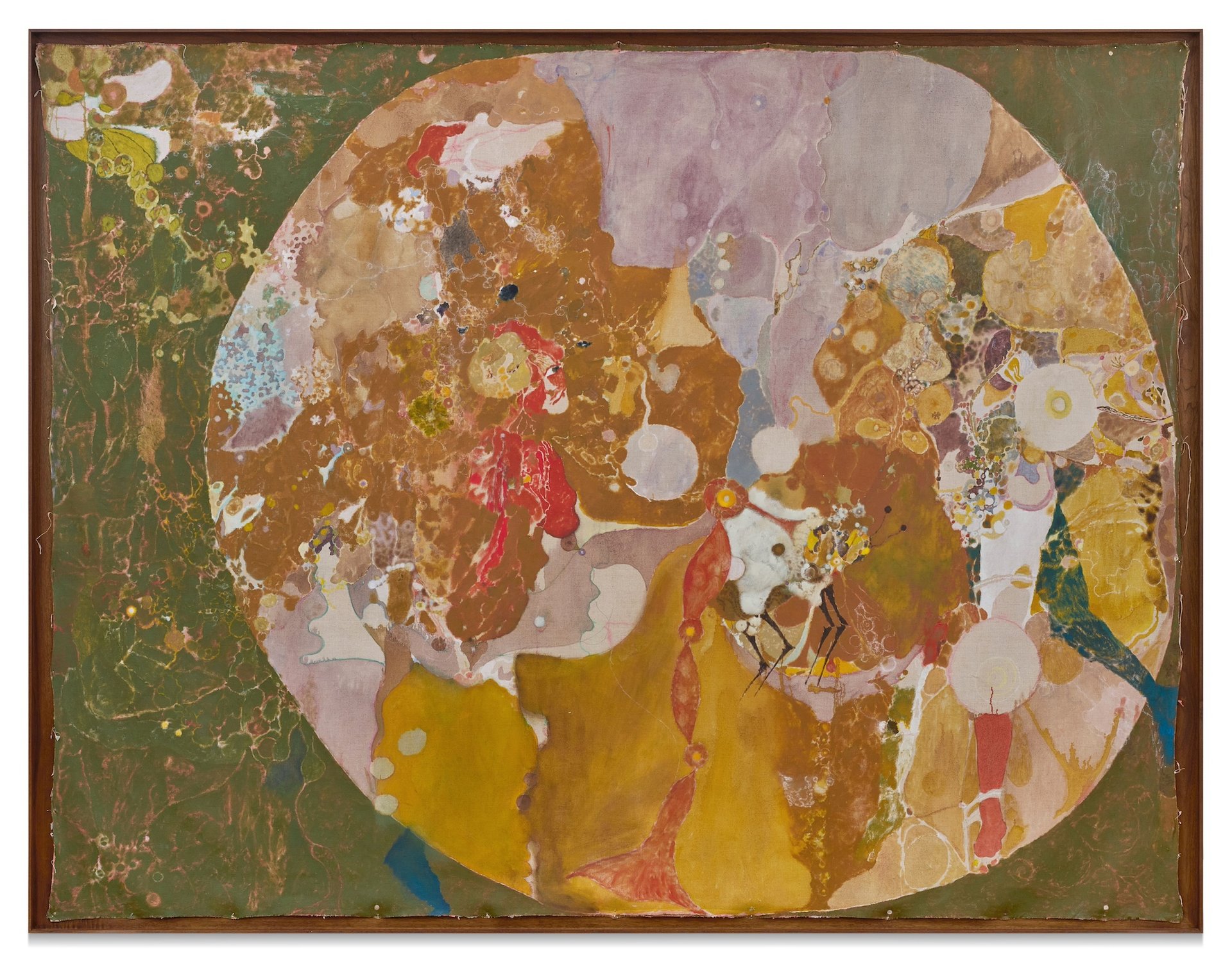
Justin Caguiat, The saint is never busy, 2019 Courtesy Sotheby's
There were other bright spots in the sale, too. Of the 17 lots offered, 13 hammered within or above their respective pre-sale estimate ranges. The sale was also comfortably majority women, with female artists contributing 70% of the lots by volume and around 55% of the sale's total by value.
The complicated contemporary
Like The Now, the contemporary art portion of Sotheby’s double bill was an eye-of-the-beholder affair. On the one hand, the 35 lots generated a hammer total of $201.1m, below their combined $217.6m presale low estimate. (Counting fees, the sale generated $234.6m overall.) On the other hand, the raw totals easily outpaced those in the equivalent contemporary evening sale last May, when Sotheby’s generated only $145.8m ($167.5m with fees) from 33 lots (counting five withdrawals).
Comparing sales and passes leads to another mixed bag. On the up side, 32 of Monday night's contemporary lots found buyers, for a lively sell-through rate of 91.4%. Yet one of the three pieces that failed to sell also carried the sale's third-highest estimate: Richard Diebenkorn’s Ocean Park #126 (1984), which passed at $14.8m after being expected to bring between $18m and $25m.
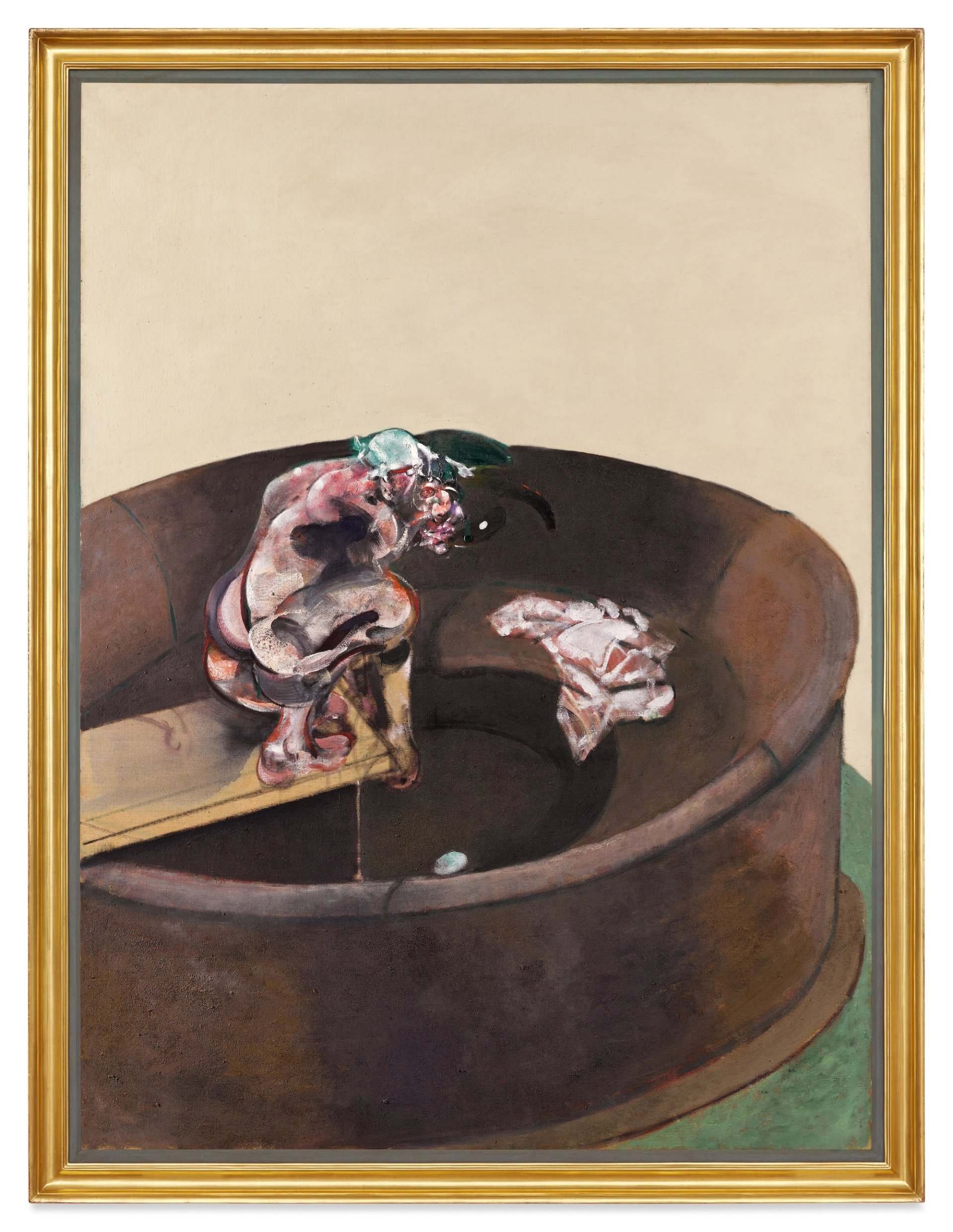
Francis Bacon, Portrait of George Dyer Crouching (1966)
Courtesy Sotheby's
The event’s top sellers sparked relatively few fireworks. The priciest work of the night, Francis Bacon’s Portrait of George Dyer Crouching (1966), hammered at $24.5m ($27.7m with fees) against a $30m to $50m target range after around 90 seconds of activity. Lucio Fontana’s cadmium yellow Concetto spaziale, La fine di Dio (1964), consigned by the Dallas-based collectors Howard and Cindy Rachofsky, also changed hands on a final bid poorer than anticipated; auctioneer Oliver Barker’s gavel fell at $19.7m ($23m with fees), a hair beneath its $20m low estimate.
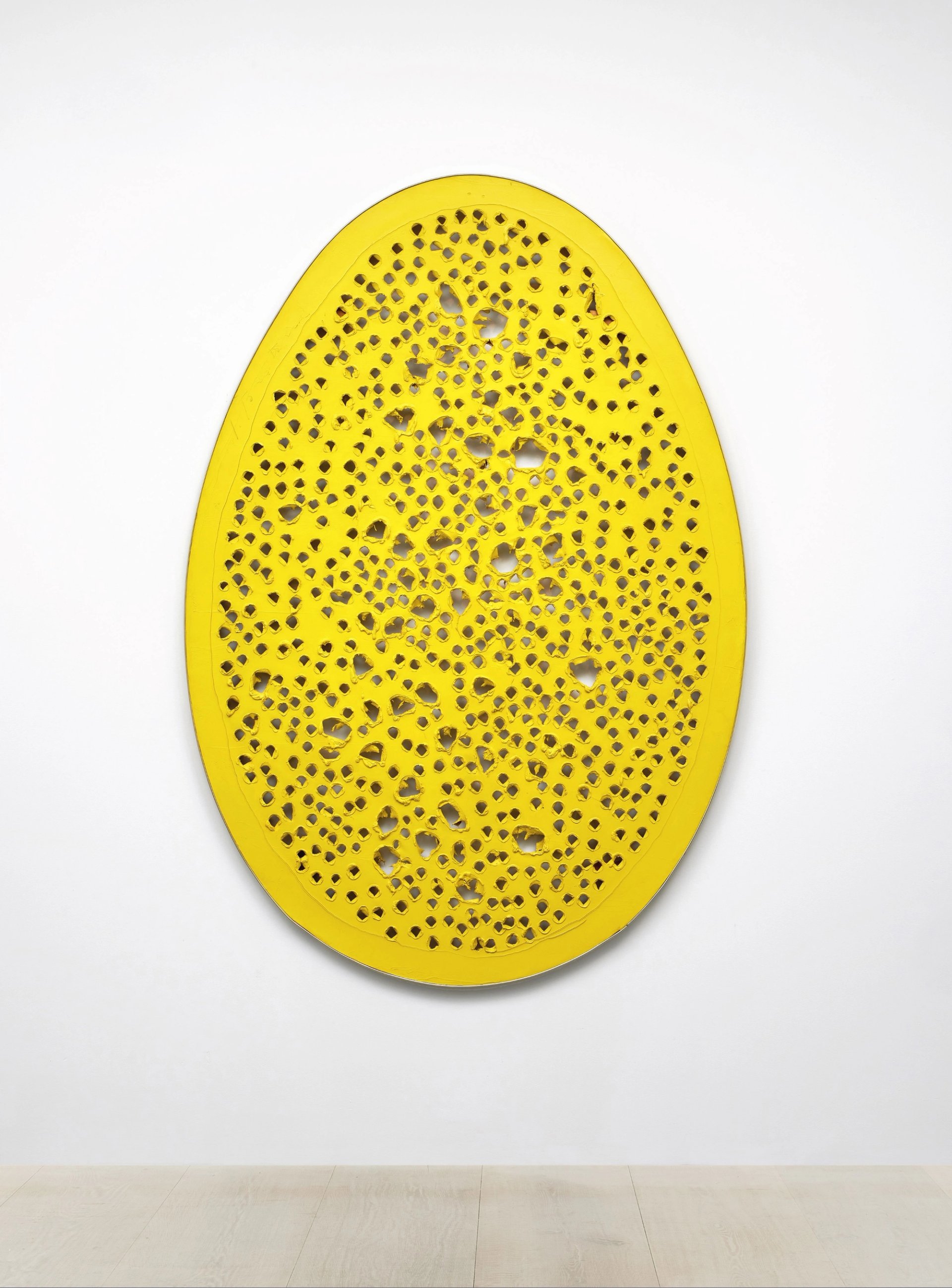
Lucio Fontana, Concetto spaziale, La fine di Dio (1964)
Courtesy Sotheby's
Faring better overall was the nearly career-spanning quartet of Joan Mitchell paintings secured from a single collector, who Katya Kazakina of Artnet News reported to be Greg Renker, the co-founder of the American multilevel-marketing empire Guthy-Renker. Two of the four paintings exceeded their high estimates before fees, with Untitled (around 1973) hammering at $2m ($2.4m with fees), 33% above its $1.5m high target, and Noon (around 1969) soliciting a winning bid of $20.5m ($22.6m), just north of its $20m upper expectation. An earlier untitled painting, this one from around 1955, landed within estimate at $8.5m ($10.1m with fees). The last painting of the four, the 1989 diptych Ground, also hammered at $8.5m, though that was well below the $12m to $18m target range.
The contemporary portion of the evening also set a new auction record for the late, great Faith Ringgold, whose painted story quilt Dinner at Gertrude Stein's: The French Collection Part II, #10 (1991) surpassed its $1m high estimate to hammer at $1.25m ($1.5m with fees).

Faith Ringgold, Dinner at Gertrude Stein's: The French Collection Part II, #10 (1991)
Courtesy Sotheby's
Sotheby’s secured irrevocable bids from third parties for 23 of the 35 lots offered in Monday night's contemporary art sale. The aggregate low estimate for those works was $170.5m, or around 78% of the total low estimate for the entire offering—not a tremendous vote of confidence in the night-of bidding process, but a way to secure numerous sales and do right by consignors in a tough market.
In the end, then, the flaws of the contemporary art sale—as well as those of The Now—are probably exaggerated by the fact that many in the trade were hoping for a more propulsive start to the spring auction week. Instead, the sector soldiers on toward a return to glamour that still appears to be farther off than anyone might like.
On Tuesday the week's action shifts to Sotheby's rivals Christie's—which is still dealing with the effects of a cyberattack that has left its website hobbled—and Phillips, the latter of which will offer the season's work with the highest estimate, a large Jean-Michel Basquiat painting from 1982 estimated to sell for between $40m and $60m.


